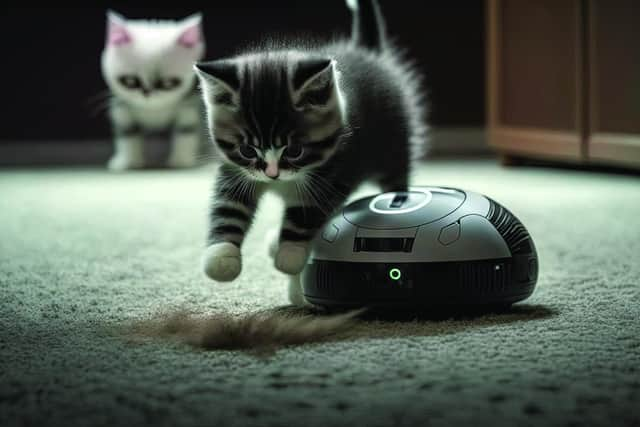Kirsty McLuckie on the rise of AI in the home
But, despite the misgivings, AI tech is already being utilitised around the home in lots of different ways.
For instance, the Interior AI app allows anyone to redesign their home virtually at the click of a button.
Advertisement
Hide AdAdvertisement
Hide AdThe technology analyses key aspects of a room, taking in the walls, windows and floors, then replaces the furniture and decor to show how it could look in a range of different interior design styles.


Instead of getting out the paint pot samples and material swatches and using your imagination, you can instantly turn your living room into a Bohemian shrine, go boldly biophilic in the downstairs loo, or give your kitchen a Japandi vibe.
This tech may just save us all from the horror of redecoration regret.
Meanwhile, smart devices in our homes already go some way in doing our thinking for us, controlling the temperature or providing security when we aren’t there.
With the right app, you can have a bath ready on your return from work, or facetime callers on your doorstep while on the other side of the world.
Robot vacuums beaver away when we’re out, and modern fridges can make up shopping lists and even order in when supplies are low.
These days, there are a myriad of smart furnishings designed to improve our home lives too.
Smart beds are impressive – costing thousands of pounds and looking something like a small spaceship – these havens of rest include inbuilt massagers, TVs that pop out of the footboard and monitors to perfect your body temperature and circadian rhythms.
The danger for me might be that I’d never leave.
Advertisement
Hide AdAdvertisement
Hide AdOther smart gadgets seem to solve a non-existent problem. A smart toaster allows you to set two slices to be browned to different levels, while a side compartment will poach your eggs to the required consistency to be ready just when that toast pops up.
While that would be a novelty, I fear it may end up in the garage along with all the other one-time must-have gadgets – spiralizers, pasta makers and waffle irons, etc – that have seen a short-lived enthusiasm in this house.
Give me an analogue teasmaid and an electric blanket any day, because I have to admit to being a bit nervous of living surrounded by machines that are potentially cleverer than I am.
I’ve had some personal experience of an all-in smart home, when several years ago I stayed for a night at a prototype villa built in Spain.
Practically all the gadgets in the house responded to voice activation only – from lighting the fire, to closing the curtains, and making a coffee.
Despite being given a detailed run through and a very impressive demonstration on how it all worked, the moment my partner and I were left alone, I suddenly felt renewed sympathy for the Luddites.
Shouting “Close the curtains!” – or even “¡Cierra la cortina!” – repeatedly caused the kitchen tap to gush.
In addition to this, the villa’s front door seemed to lock and unlock whenever we held a conversation with each other, even in whispers.
And, perhaps because of my woeful Spanish accent, we never did manage to get a café con leche.
- Kirsty McLuckie is property editor at The Scotsman